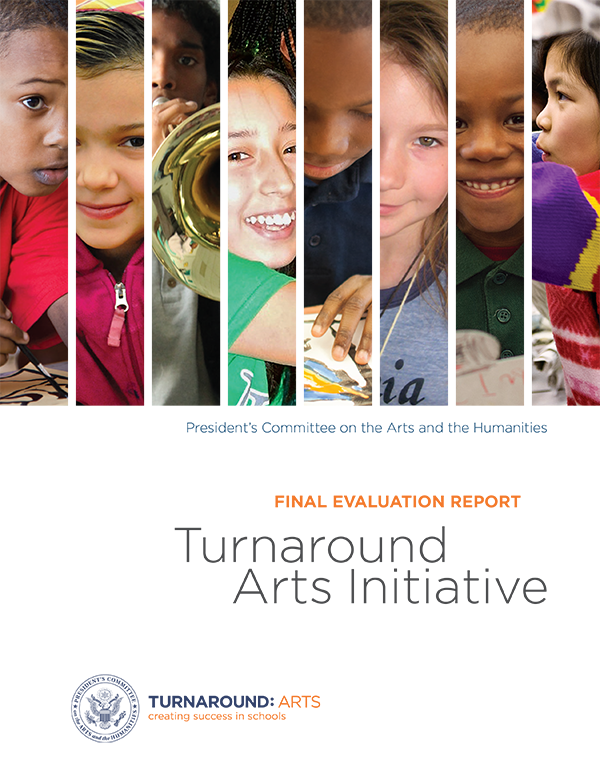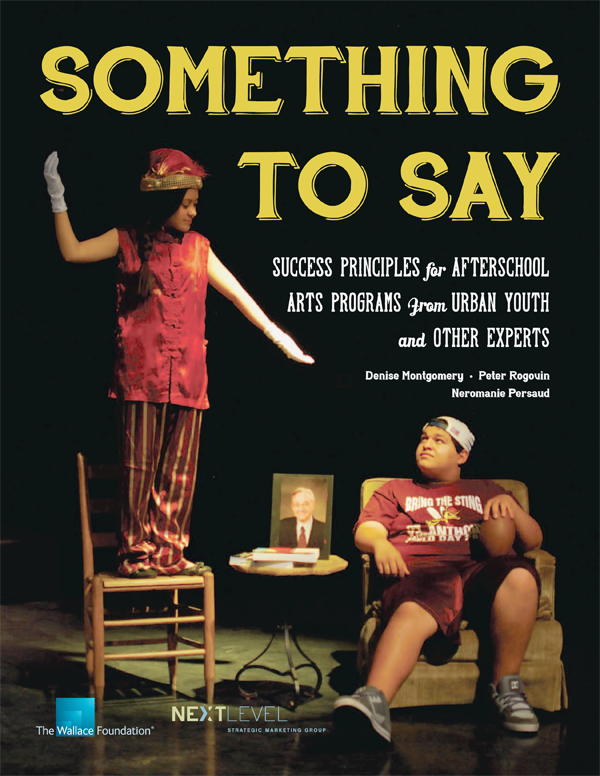In January, the President’s Committee on the Arts and the Humanities (PCAH) released the results of an independent study that shows substantial gains in student achievement at schools participating in its Turnaround Arts initiative. The eight schools in the pilot phase of the initiativeshowing increases in reading and math scores, as well as an increase in attendance and a decrease in suspensionsdemonstrate that the program’s use of the arts is having a measurable impact on low-performing schools by increasing student engagement and narrowing the achievement gap.
Arts Education
Grantmakers in the Arts holds arts education as one of its core funding focus areas. GIA is committed to invigorate funding and support for arts education within federal policy and defend that every resident has access to the arts as part of a well-rounded, life-long education. In 2012, GIA formed the Arts Education Funders Coalition (AEFC), an interest group within GIA, to address identified needs in comprehensive arts education and to strengthen communication and networking among arts education funders. Advised by a committee of Coalition members, GIA engaged the services of Washington, DC-based Penn Hill Group, a firm with education policy expertise and experience working with diverse education groups to research, develop, and promote educational policy strategies.
Most recently, GIA worked with Representative Suzanne Bonamici (D-OR) on the development of the Arts Education for All Act, the broadest arts education policy bill ever introduced in Congress.
In Spring 2021, GIA influenced the U.S. Department of Education to highlight the importance of equitable access to arts and culture to the process of reopening schools and to make explicit how racialized this access was prior to the pandemic and that addressing this inequity is essential to effective reopening.
Grantmakers in the Arts is delighted that in 2020 Congress passed the Supporting Older Americans Act, including our recommendations that the Administration on Aging include the arts in the issues to be identified and addressed and be included among supportive services for older Americans.
GIA has successfully lobbied to include arts-related provisions in the Child Care for Working Families Act, which proposes to better help low-income families pay for childcare and expand high-quality state preschool options.
GIA is extremely proud of our work over the past several years on raising the visibility of the arts in the Elementary and Secondary Education Act (ESEA) in its legislative form. GIA and Penn Hill Group continue these advocacy efforts around the Every Student Succeeds Act (ESSA), guiding GIA members and their grantees in advocating for new or expanded arts programs at their local schools and districts.
President’s Committee on the Arts and the Humanities, 400 7th St, SW, Washington, DC 20506. (202) 682-5409, pcah.gov.
Download:
Read More...Melissa M. Menzer from the NEA Office of Research & Analysis posts to Art Works Blog:
Coalition Purpose
As Grantmakers in the Arts (GIA) has seen federal funding for arts education decrease, dedicated champions dwindle, and schools around the country drop art courses, leaders are working together to rethink the policy landscape and their policy agenda, with help from trusted Washington consultants. GIA has formed a coalition of arts and education grantmakers and other concerned arts organizations to research and identify federal policy opportunities that promote equitable access to arts education in all public schools.
Denise Montgomery, Peter Rogouin, and Neromanie Persaud. 2013, 136 pages, The Wallace Foundation, New York
Download:
Read More...— Benjamin Franklin

Doug Israel, Director of Research and Policy for The Center for Arts Education, posts to Huffington Post Education:
New Jersey continues to lead the nation through the release of detailed arts education information to the public and the research findings look promising — a 4% increase in high school arts participation from the previous year with significant increases in dance and theater participation. These findings are based on the arts educator assignment data for all schools and the high school arts participation data from the New Jersey School Performance Reports just released by the New Jersey State Department of Education.
We wanted to share this positions opening at Hewlett with AEFC members
Program Officer, Performing Arts
About the Foundation
The William and Flora Hewlett Foundation helps people build measurably better lives. The Foundation concentrates its resources on programs in education, environment, global development and population, performing arts, and philanthropy, as well as grants to support disadvantaged communities in the San Francisco Bay Area.


